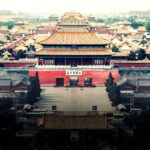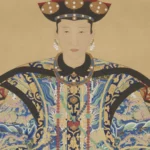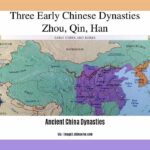Welcome to a journey back in time to explore the remarkable achievements of the Han Dynasty’s golden age! In this article, we will delve into the prosperous era of ancient Chinese history, where advancements in technology, culture, and economy flourished. As an experienced historian specializing in ancient civilizations, I have meticulously researched and analyzed the texts, artifacts, and archaeological discoveries to uncover the true essence of this extraordinary period. So, fasten your seatbelts and get ready to be captivated by the wonders of the Han Dynasty’s golden age!
Han Dynasty Golden Age Achievements
During the Han Dynasty, China experienced a period of extraordinary prosperity and innovation. From technological advancements to cultural achievements, the golden age of the Han Dynasty left an indelible mark on Chinese history. Let’s explore some of the remarkable achievements that emerged during this flourishing era.
Technological Innovations: Paving the Way for Progress
The invention of paper was a groundbreaking achievement of the Han Dynasty. Prior to this, writing materials primarily consisted of bamboo slips and silk. Paper revolutionized the dissemination of knowledge, making it more accessible to a wider population.
Glazed pottery was another remarkable technological advancement. The Han Dynasty perfected the art of crafting delicate ceramics adorned with colorful glazes. This not only enhanced the aesthetics of pottery but also improved its functionality and durability.
Advancements in agricultural tools and techniques played a pivotal role in increasing crop yields and sustaining the growing population. Iron plows, improved irrigation systems, and the introduction of new crops significantly boosted agricultural productivity.
These technological innovations of the Han Dynasty paved the way for progress, transforming various aspects of daily life.
Cultural Advancements: Nurturing the Arts and Education
The Han Dynasty nurtured the arts, fostering a vibrant cultural scene. Painting, poetry, and music flourished, creating an atmosphere of creativity and expression. Royalty and the elite patronized the arts, supporting artists and artisans.
Confucian-based education systems were formalized during this period. The Han Dynasty recognized the importance of education in cultivating moral and ethical values. Confucianism became the foundation of the Han Dynasty’s governance and educational institutions.
Advancements in historical writings were also notable during this period. The Han Dynasty refined historiography, establishing a systematic approach to recording and analyzing historical events. This laid the groundwork for future historians and scholars.
The cultural advancements of the Han Dynasty shaped the Chinese society, contributing to the development of a rich and diverse cultural heritage that still resonates today.
Economic Growth: Expanding Trade and Prosperity
The establishment of the Silk Road trade network was perhaps the most significant economic achievement of the Han Dynasty. This extensive network facilitated trade routes connecting China with various regions, fostering economic growth, and cultural exchange.
General economic expansion characterized the golden age of the Han Dynasty. The empire experienced unprecedented prosperity, driven by flourishing trade, agricultural advancements, and industrial production. This wealth enabled the government to invest in infrastructure and public welfare.
The expansion of the empire along the Silk Road not only brought economic benefits but also increased political influence and cultural diffusion. The Han Dynasty extended its borders, solidifying its dominance and establishing diplomatic relations with neighboring states.
The economic growth during the Han Dynasty provided a solid foundation for the future development of China, leaving a lasting impact on its economy and international relations.
The Legacy of the Han Dynasty
The remarkable achievements of the Han Dynasty’s golden age have had a profound and enduring impact on Chinese culture, science, technology, agriculture, mathematics, and literature. The advancements in papermaking and glazed pottery revolutionized craftsmanship and communication. The emphasis on education and historical recordings laid the foundation for Chinese intellectual traditions. The economic growth and expansion along the Silk Road shaped China’s trading networks and cultural exchanges. Overall, the legacy of the Han Dynasty’s golden age is a testament to the remarkable achievements and advancements that took place during this prosperous period in ancient Chinese history.
The Han Dynasty’s golden age stands as a testament to the incredible resilience, innovation, and excellence that mankind is capable of achieving. Through their technological advancements, cultural achievements, and economic growth, the Han Dynasty created a rich tapestry of achievements that continue to inspire and shape our world today.
The Han Dynasty Golden Age was a remarkable period in ancient Chinese history. It was a time of immense prosperity, cultural advancements, and innovative achievements. The empire flourished under the rule of the Emperor Wu, who implemented various policies to ensure stability and growth. The advancements in art, literature, and technology during this period were unparalleled, with many groundbreaking inventions still influencing modern society today. Discover more about this captivating era by clicking on the link han dynasty golden age. Explore the secrets of the past and immerse yourself in the wonders of the Han Dynasty Golden Age.
The Prosperous Era of the Han Dynasty: A Golden Age of Achievements
[youtube v=”A-Ck4XQr8lg”]
Introduction
During the long-lasting Han Dynasty in China, which spanned over 400 years, the empire experienced a period of immense prosperity and innovation that is often referred to as the golden age. This era witnessed remarkable advancements in various fields, including technology, arts, culture, and trade, leaving a profound legacy on Chinese history and even influencing the world beyond its borders.
Technological Ingenuity and Agricultural Advancements
The Han Dynasty was characterized by a plethora of technological innovations that revolutionized various aspects of Chinese society. One of its significant achievements was the invention of paper made from wood pulp, which not only transformed the way people recorded information but also facilitated widespread literacy and communication. Additionally, the perfection of glazed pottery during this period showcased the remarkable craftsmanship and artistic sensibilities of the Han artisans.
Enhancements in agricultural tools and techniques further contributed to the prosperity of the empire. The development of the iron plow allowed farmers to till more land in a single day, leading to increased grain production and improved efficiency in food cultivation. The introduction of the wheelbarrow also played a crucial role in boosting productivity and easing the burden of heavy labor for workers.
Quote: “The technological advancements during the Han Dynasty had a profound impact on agriculture, literacy, and artistic expression, setting the stage for a flourishing civilization.”
Flourishing Arts and Culture
The Han Dynasty marked a significant artistic renaissance, with notable advancements in painting, poetry, music, and the patronage of artists and artisans. Figure painting, which emphasized realistic depictions of famous Confucian scholars and scenes from everyday life, gained immense popularity during this time. These intricate paintings adorned palace walls and tombs, showcasing the mastery and creativity of Han artists.
In the field of literature, the development of the Fu and Shi styles of poetry showcased the sophistication and eloquence of Han poets. Moreover, the records of a grand historian, written by Sima Qian, became a seminal historical work that served as a model for future Chinese historical texts. Together, these cultural achievements fostered a sense of identity and pride among the people of the Han Dynasty.
Quote: “The artistic and literary advancements of the Han Dynasty enriched Chinese culture, capturing the essence of the era and leaving an indelible mark on the nation’s artistic heritage.”
Confucian-Based Education and Cultural Exchange
The Han Dynasty paved the way for the formalization of education systems, with Confucian principles serving as the cornerstone of learning. Emperor Wu, in particular, established a university that taught Confucianism, further elevating its influence on society. The introduction of civil service exams aimed to identify the best and brightest individuals for government positions, based on their knowledge and understanding of Confucian texts.
Although these exams were technically open to all, only the wealthy or exceptionally gifted individuals had the means to pursue an education and take the test. Nevertheless, this education system created a large group of educated individuals who contributed to various fields, such as poetry, medicine, and scholarship, further enhancing the cultural and intellectual scene of the empire.
Quote: “The adoption of Confucian teachings and the establishment of civil service exams transformed the educational landscape, shaping the intellectual elite of the Han Dynasty.”
The Silk Road and Economic Expansion
One of the most significant achievements of the Han Dynasty was the establishment of the Silk Road, a vast trade network that connected Asia with Europe. This facilitated economic growth, cultural exchange, and the diffusion of ideas between nations. The trading of goods such as silk, ceramics, spices, and precious metals became the backbone of the empire’s economy, bringing wealth and prosperity to the region.
The expansion along the Silk Road not only resulted in economic benefits but also expanded the political influence of the Han Dynasty. The exchange of knowledge, technologies, and cultural practices fostered a more interconnected world, leaving a lasting impact on global history.
Quote: “The Silk Road served as a conduit for economic prosperity, cultural exchange, and intellectual growth, solidifying the significance of the Han Dynasty on a global scale.”
Conclusion
The achievements of the Han Dynasty during its golden age were truly remarkable and had a profound impact on Chinese society and the world at large. Technological advancements, artistic brilliance, educational reforms, and flourishing trade networks all contributed to the prosperity and cultural richness of the empire.
Quote: “The legacy of the Han Dynasty encompasses a multitude of achievements, from technological innovations and artistic brilliance to educational reforms and global trade networks. The golden age of the Han Dynasty continues to inspire and shape the world we live in today.”
FAQ
Q: What were the major achievements of the Han Dynasty’s golden age?
A: The major achievements of the Han Dynasty’s golden age include the development of the Silk Road trade network, the invention of new materials such as paper and glazed pottery, and the formulation of history writing. Additionally, the Han Dynasty improved agricultural tools, techniques, and yields, revived learning and formulated Confucian-based educational systems, expanded trade and empire along the Silk Road, and experienced general economic expansion domestically. The Han Dynasty also saw changes in beliefs and burial practices, and is considered a golden age in Chinese history.
Q: What impact did the achievements of the Han Dynasty have on Chinese culture and society?
A: The achievements of the Han Dynasty have had a lasting impact on Chinese culture, science, technology, agriculture, mathematics, and literature. The development of the Silk Road trade network facilitated cultural exchange and the spread of ideas between China and other civilizations. The invention of paper revolutionized the way information was recorded and transmitted, while the invention of glazed pottery improved ceramic production techniques. The formulation of history writing laid the foundation for historical studies in China. The Han Dynasty’s advancements in agricultural tools and techniques contributed to increased crop yields, supporting population growth. The revival of learning and the formulation of Confucian-based educational systems shaped Chinese intellectual and educational traditions. Overall, the achievements of the Han Dynasty helped shape the foundation of Chinese civilization.
Q: How did the Han Dynasty contribute to economic growth?
A: The Han Dynasty contributed to economic growth through various means. The development of the Silk Road trade network facilitated commerce and cultural exchange between China and other regions, resulting in increased trade activity, wealth, and prosperity. The expansion of the Han Empire along the Silk Road enabled access to new markets and resources, further boosting economic growth. Internally, the Han Dynasty implemented policies to stimulate economic development, including land reforms that redistributed land to peasants and encouraged agricultural productivity. The dynasty also implemented measures to standardize currency, improve transportation infrastructure, and support industries such as pottery and iron production. These efforts led to general economic expansion domestically, contributing to the prosperity of the Han Dynasty.
Q: What were the cultural advancements during the Han Dynasty’s golden age?
A: The Han Dynasty’s golden age witnessed significant cultural advancements. The dynasty experienced a revival of learning, with scholars and intellectuals dedicated to the study and preservation of ancient texts. This sparked a renewed interest in Confucian teachings and the formulation of Confucian-based educational systems, which became the foundation of Chinese intellectual and educational traditions. The arts and literature flourished, with notable works being produced in fields such as poetry, painting, and calligraphy. The Han Dynasty also saw changes in beliefs and burial practices, with a fusion of Confucianism, Taoism, and other indigenous beliefs. The flourishing cultural scene during this period contributed to the overall richness of Chinese cultural heritage.
Q: How did the achievements of the Han Dynasty contribute to scientific and technological advancements?
A: The achievements of the Han Dynasty played a significant role in scientific and technological advancements. The invention of new materials, such as paper and glazed pottery, revolutionized communication and ceramic production respectively. Paper allowed for the mass production of written texts, facilitating the spread of knowledge and the development of literature. Glazed pottery improved the production techniques, resulting in more durable and aesthetically pleasing ceramics. The Han Dynasty also made advancements in agricultural tools and techniques, such as the iron plow, which increased agricultural productivity. These advancements supported population growth and economic development. Overall, the achievements of the Han Dynasty in science and technology laid the groundwork for future innovations and contributed to the overall progress of ancient Chinese civilization.
















